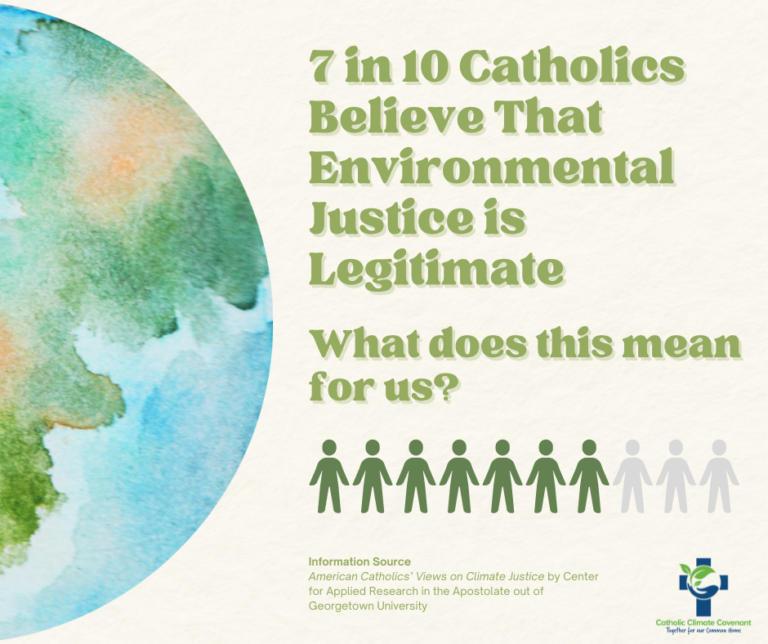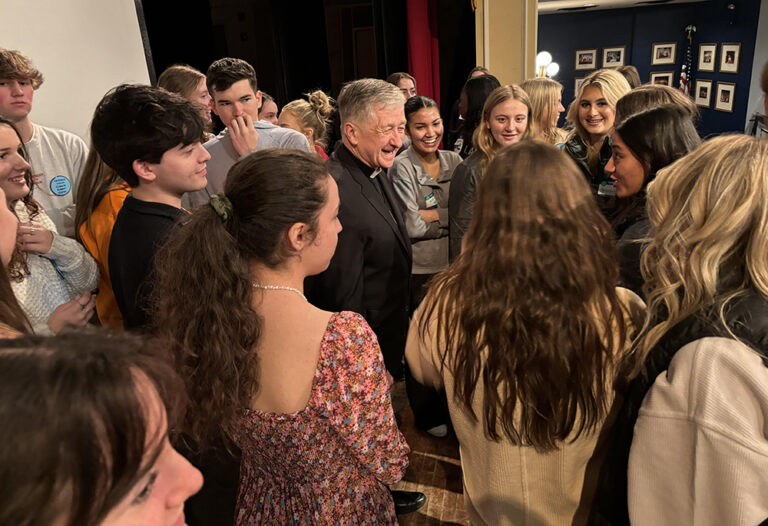Matter matters. Of the many notable takeaways from the closing keynote by Sister Ilia Delio, OSF, PhD, Josephine C. Connelly Endowed Chair in Theology at Villanova University at last month’s Laudato Si’ and the U.S. Catholic Church Conference, this point stood out above the rest.
As we celebrate this Season of Creation, I am reminded of Sr. Ilia’s inspiring message. As she describes, the energy in the ecosystem around us and all of nature is tangible, experienced, and real. Sr. Ilia references the phenomenon of quantum entanglement to explain this interconnectedness. She describes two particles that, when separated, can produce an unexplainable effect on one another, referring to the effect as “non local action at a distance.”
In sum, this phenomenon reveals a reciprocity with nature, and a lack of independence of any one part of our natural world. What happens in one corner of an ecosystem affects all of the parts of that ecosystem. Simply put, matter matters.
This, of course, is not news to those who study and care deeply about ecology and the protection and restoration of our common home. The deep interconnectedness of humans and the natural world, and of the various parts of the natural world to each other, is a given. Pope Francis reflects on this interconnectedness in Laudato Si’, writing, “We are part of nature, included in it, and thus in constant interaction with it.”
And yet there was another angle that captured my imagination as I followed Sr. Ilia’s discourse on the insights of scientist, theologian, and philosopher Fr. Pierre Teilhard de Chardin. If matter matters, and entangles with other matter, something else must matter too: hope.
If all of creation is part of a living, holy body, it just may be that our hopefulness for our world is as contagious and impactful on nature as our actions are.
It is easy to feel discouraged and overwhelmed by the gravity of the climate crisis, especially after the release of the recent report from the Intergovernmental Panel on Climate Change. We know with greater certainty than ever that the next 30 years will bring with them increasing environmental turbulence – turbulence that we in the U.S. will continue to feel, but one that our poor brothers and sisters around the world will experience to an even greater extent.
As I listened to Sr. Ilia’s words, I wondered whether this hopelessness has an effect on the natural world around. If humans and nature are in this constant exchange of energy, this invisible dance of matter deeply entangled with other matter, might our hopelessness negatively affect our fellow creation? (Or – to use Sr. Ilia’s language – our created brothers and sisters. In her talk, Sr. Ilia challenges participants to use language that reflects our deep connectivity. She asks herself what her relationship is to the natural world around her: “Am I distant cousin?” she ponders. “Or am I sister?”)
To put in a positive light, might a collective hopefulness affect the ongoing creation of the world around us?
If one follows Sr. Ilia’s high-level overview of the deep and complex discipline of quantum physics, it is not too far off to imagine how a sentiment of hopefulness may affect the created world, in a “non-local action at a distance” all their own.
After all, as Sr. Ilia puts it, humans are co-creators of creation in an ongoing, unfolding, and ever-changing dynamic. She draws back frequently to Fr. Teilhard de Chardin, citing that ours is a web of created beings deeply entangled with God the Creator.
St. Francis of Assisi embraced and celebrated this divine entanglement. He was known for stooping to the wildflowers and inviting them to praise the Lord, an anecdote Sr. Ilia refers to, in order to exemplify radically united creation.
As a model for the effect our hopefulness may have on our fellow creation, we need look no further than 1 Corinthians 12:12: “As a body is one though it has many parts, and all the parts of the body, though many, are one body, so also Christ.”
The context of this passage is of course a commentary on the heritage and background of Christ’s early followers: “Jews or Greeks, slaves or free persons.” Yet this image of an interconnected body not only provides a visual for the sort of deep interconnectedness with nature that Sr. Ilia speaks of, but also for the possibility for hopefulness to spread and be shared by all members of our created world. As the passage continues, “If [one] part suffers, all the parts suffer with it; if one part is honored, all the parts share its joy” (1 Corinithians 12:26).
This means that this Season of Creation and beyond our prayers, advocacy, and actions deeply matter. You can download and use the 2021 Feast of St. Francis Program this Season of Creation intended to help us grow in our personal eco-conversion so that we may be hopeful in our actions (reduce our consumption, utilize alternative energies, choose more sustainable food sources, sign the Catholic Climate Petition) as much as in our personal hymns of praise.
I recall the well-known words of the prayer to St. Francis, “Where there is despair, hope.” Above all, let this be what fuels our hearts and voices as we tackle the crisis at hand. When we are tempted to despair, may we remember that hope matters.


